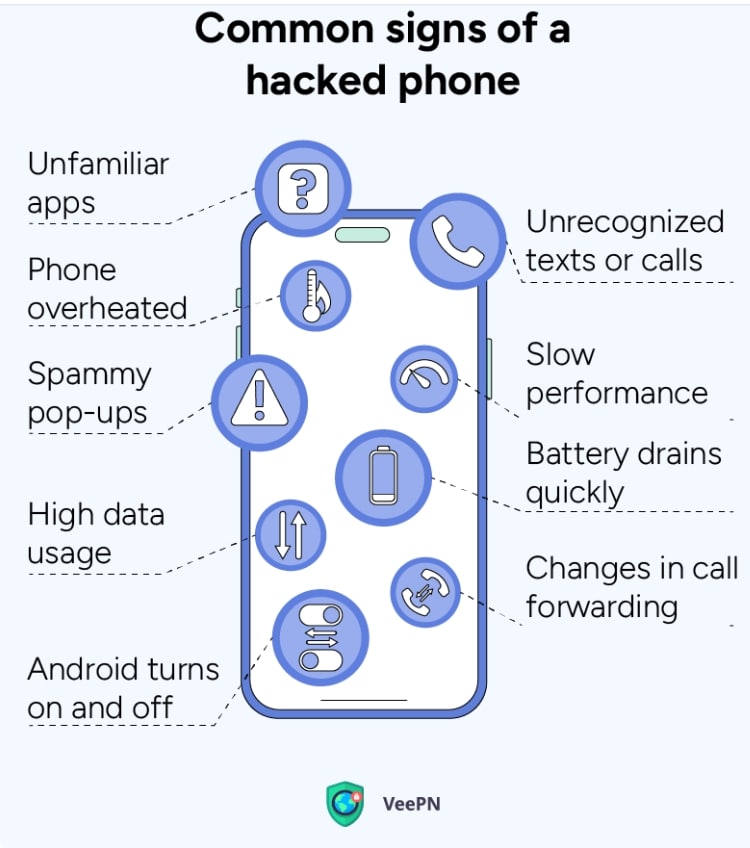Mobile application hacking, also known as ethical hacking or penetration testing, is a systematic procedure for identifying and exploiting vulnerabilities in mobile apps with the goal of enhancing their security.
Hacking an Android mobile application is becoming faster and easier than ever before, let’s see why:
- Automated tools to support hacking are readily available on the market, and most of them are free.
- Industry research found that in 84% of cases, the commencing compromise took some “minutes” to complete.
- In contradiction to centralized web environments, mobile applications live “in the wild” on an unregulated, distributed, and fragmented mobile device ecosystem. Exposed binary code in mobile applications can be directly examined, exploited, accessed, and modified by attackers.

Steps For Mobile Application Hacking
Android mobile application hacking refers to the method of determining and exploiting vulnerabilities in mobile apps. Security experts commonly carry out this process with the goal of enhancing the application’s security.
Android mobile application exploitation typically requires a systematic approach with several phases, including:
1. Planning
First up, it’s crucial to obtain written permission to test an application for Android hacking. Also, it’s important to define the scope of security testing, which includes identifying applicable security controls, sensitive data, and testing goals.
2. Analyzing
In this phase, the security professionals or experts analyze the app’s architectural and environmental context to get a general understanding. This can also involve reverse engineering the application to know about its functionalities and determine potential vulnerabilities. There are several top mobile application hacking tools, including:
- APKTool
- BurpSuite
- JaDX
- ABE (Android Backup Extractor)
- reFlutter
- ADB Shell
- Generic DEX Analyser (GDA)
- Frida
- Objection
- Hopper
These mobile application testers for hacking can help you decompile the application’s APK file. It helps the security experts to view its resources and source code.
3. Preparing A Framework
From the previously gathered information, the security experts build a complete understanding of the application, potential vulnerabilities, the data it holds, and its entry points.
This can also include using automated tools to scan known vulnerabilities and explore the app manually to determine less evident faults. Tools like Mobile Security Framework (MSF) can automate this procedure by offering dynamic and static analysis of the application.
4. Exploiting The Application
In this particular phase, the cybersecurity expert attempts to exploit the previously identified vulnerabilities. This can involve methods including:
- Cryptographic Vulnerability Assessment: This step involves testing the application’s cryptographic executions for weaknesses. For example, you can check if the application is using weak or outdated exception algorithms. You can also check if it is storing encryption keys in a weak or unsafe manner. You can use KeyStore Explorer to analyze the application’s keystore files.
- Anonymously attempting to perform backend server functionality: This involves executing server-side operations without appropriate authentication. For example, you may try to manipulate GET/POST requests to the backend server to notice if you can perform actions that might need an authentic session token. Several tools, like BurpSuite, can allow the manipulation and intercept of these requests.
- Controlling debuggable apps: If the application is debuggable, you can able to adjust its behaviour at runtime without adjusting its source code. For example, you can also use a tool like Frida to add code to the application’s processes. It will allow you to adjust app behaviour or bypass security checks.
- Exploiting Insecure Data Storage: If the application stores sensitive information insecurely, you can extract that information using tools like ADB or SQLite Editor. For example, you can extract personal data, user credentials, or any other sensitive information.
- Manipulating Unsafe Communication: If the application communicates with servers utilising unsafe protocols or without appropriate encryption, you may be able to intercept and adjust this particular communication. For example, you can also use a tool like Wireshark to get network traffic and extract personal or sensitive information.
5. Final Report
The last step in mobile application hacking is providing a detailed report of the security professionals’ findings. This should include the vulnerability type, the risk classification, the exploitation procedure, and any data accessed illegitimately. This report can then be utilized to help mobile application developers enhance their security.
On a Final Note:
It’s crucial to note that ethical hacking demands complete knowledge of the technologies involved and a strong sense of ethics. Always make sure you have permission to test an app for mobile application hacking. Try to use your skills to help enhance security rather than causing any harm.
Also Read: Best Automation Testing Tools

